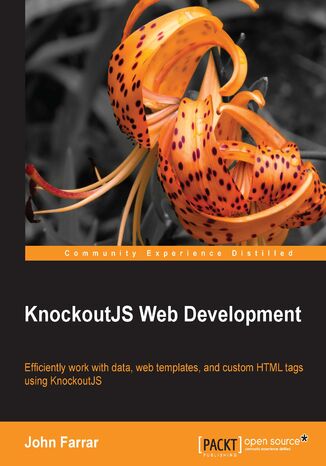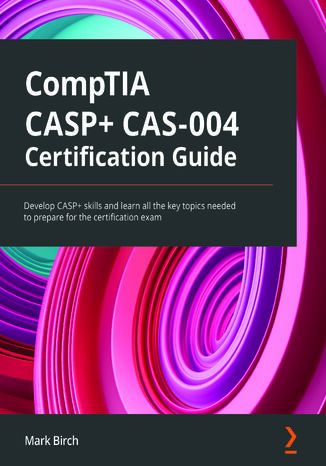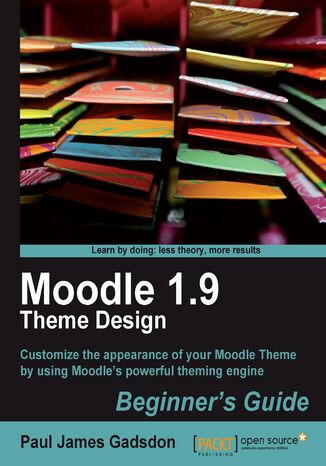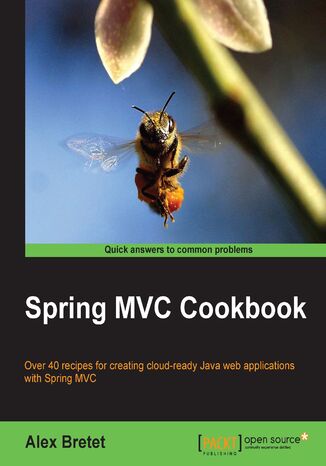Kategorien
-
- Bitcoin
- Geschäftsfrau
- Coaching
- Controlling
- E-Business
- Ökonomie
- Finanzen
- Börse und Investitionen
- Persönliche Kompetenzen
- Computer im Büro
- Kommunikation und Verhandlungen
- Kleines Unternehmen
- Marketing
- Motivation
- Multimedia-Training
- Immobilien
- Überzeugung und NLP
- Steuern
- Sozialpolitik
- Handbȕcher
- Präsentationen
- Führung
- Public Relation
- Berichte, Analysen
- Geheimnis
- Social Media
- Verkauf
- Start-up
- Ihre Karriere
- Management
- Projektmanagement
- Personal (HR)
-
- Architektura i wnętrza
- Sicherheit und Gesundheit am Arbeitsplatz
- Biznes i Ekonomia
- Haus und Garten
- E-Business
- Ekonomia i finanse
- Esoterik
- Finanzen
- Persönliche Finanzen
- Unternehmen
- Fotografie
- Informatik
- HR und Gehaltsabrechnung
- Frauen
- Computer, Excel
- Buchhaltung
- Kultur und Literatur
- Wissenschaftlich und akademisch
- Umweltschutz
- meinungsbildend
- Bildung
- Steuern
- Reisen
- Psychologie
- Religion
- Landwirtschaft
- Buch- und Pressemarkt
- Transport und Spedition
- Gesundheit und Schönheit
-
- Office-Programme
- Datenbank
- Bioinformatik
- IT Branche
- CAD/CAM
- Digital Lifestyle
- DTP
- Elektronik
- Digitale Fotografie
- Computergrafik
- Spiele
- Hacking
- Hardware
- IT w ekonomii
- Wissenschaftliche Pakete
- Schulbücher
- Computergrundlagen
- Programmierung
- Mobile-Programmierung
- Internet-Server
- Computernetzwerke
- Start-up
- Betriebssysteme
- Künstliche Inteligenz
- Technik für Kinder
- Webmaster
-
- Anthologien
- Ballade
- Biografien und Autobiografien
- Für Erwachsene
- Drama
- Tagebücher, Memoiren, Briefe
- Epos
- Essay
- Science Fiction
- Felietonys
- Fiktion
- Humor, Satire
- Andere
- Klassisch
- Krimi
- Sachbücher
- Belletristik
- Mity i legendy
- Nobelpreisträger
- Kurzgeschichten
- Gesellschaftlich
- Okultyzm i magia
- Erzählung
- Erinnerungen
- Reisen
- Gedicht
- Poesie
- Politik
- Populärwissenschaftlich
- Roman
- Historischer Roman
- Prosa
- Abenteuer
- Journalismus
- Reportage
- Romans i literatura obyczajowa
- Sensation
- Thriller, Horror
- Interviews und Erinnerungen
-
- Archäologie
- Bibliotekoznawstwo
- Filmwissenschaft
- Philologie
- Polnische Philologie
- Philosophie
- Finanse i bankowość
- Erdkunde
- Wirtschaft
- Handel. Weltwirtschaft
- Geschichte und Archäologie
- Kunst- und Architekturgeschichte
- Kulturwissenschaft
- Linguistik
- Literaturwissenschaft
- Logistik
- Mathematik
- Medizin
- Geisteswissenschaften
- Pädagogik
- Lehrmittel
- Populärwissenschaftlich
- Andere
- Psychologie
- Soziologie
- Theatrologie
- Teologie
- Theorien und Wirtschaftswissenschaften
- Transport i spedycja
- Sportunterricht
- Zarządzanie i marketing
-
- Sicherheit und Gesundheit am Arbeitsplatz
- Geschichte
- Verkehrsregeln. Führerschein
- Rechtswissenschaften
- Gesundheitswesen
- Allgemeines. Wissenskompendium
- akademische Bücher
- Andere
- Bau- und Wohnungsrecht
- Zivilrecht
- Finanzrecht
- Wirtschaftsrecht
- Wirtschafts- und Handelsrecht
- Strafrecht
- Strafrecht. Kriminelle Taten. Kriminologie
- Internationales Recht
- Internationales und ausländisches Recht
- Gesundheitsschutzgesetz
- Bildungsrecht
- Steuerrecht
- Arbeits- und Sozialversicherungsrecht
- Öffentliches, Verfassungs- und Verwaltungsrecht
- Familien- und Vormundschaftsrecht
- Agrarrecht
- Sozialrecht, Arbeitsrecht
- EU-Recht
- Industrie
- Agrar- und Umweltschutz
- Wörterbücher und Enzyklopädien
- Öffentliche Auftragsvergabe
- Management
-
- Afrika
- Alben
- Südamerika
- Mittel- und Nordamerika
- Australien, Neuseeland, Ozeanien
- Österreich
- Asien
- Balkan
- Naher Osten
- Bulgarien
- China
- Kroatien
- Tschechische Republik
- Dänemark
- Ägypten
- Estland
- Europa
- Frankreich
- Berge
- Griechenland
- Spanien
- Niederlande
- Island
- Litauen
- Lettland
- Mapy, Plany miast, Atlasy
- Miniführer
- Deutschland
- Norwegen
- Aktive Reisen
- Polen
- Portugal
- Andere
- Przewodniki po hotelach i restauracjach
- Russland
- Rumänien
- Slowakei
- Slowenien
- Schweiz
- Schweden
- Welt
- Türkei
- Ukraine
- Ungarn
- Großbritannien
- Italien
-
- Lebensphilosophien
- Kompetencje psychospołeczne
- zwischenmenschliche Kommunikation
- Mindfulness
- Allgemeines
- Überzeugung und NLP
- Akademische Psychologie
- Psychologie von Seele und Geist
- Arbeitspsychologie
- Relacje i związki
- Elternschafts- und Kinderpsychologie
- Problemlösung
- Intellektuelle Entwicklung
- Geheimnis
- Sexualität
- Verführung
- Aussehen ind Image
- Lebensphilosophien
-
- Bitcoin
- Geschäftsfrau
- Coaching
- Controlling
- E-Business
- Ökonomie
- Finanzen
- Börse und Investitionen
- Persönliche Kompetenzen
- Kommunikation und Verhandlungen
- Kleines Unternehmen
- Marketing
- Motivation
- Immobilien
- Überzeugung und NLP
- Steuern
- Sozialpolitik
- Handbȕcher
- Präsentationen
- Führung
- Public Relation
- Geheimnis
- Social Media
- Verkauf
- Start-up
- Ihre Karriere
- Management
- Projektmanagement
- Personal (HR)
-
- Anthologien
- Ballade
- Biografien und Autobiografien
- Für Erwachsene
- Drama
- Tagebücher, Memoiren, Briefe
- Epos
- Essay
- Science Fiction
- Felietonys
- Fiktion
- Humor, Satire
- Andere
- Klassisch
- Krimi
- Sachbücher
- Belletristik
- Mity i legendy
- Nobelpreisträger
- Kurzgeschichten
- Gesellschaftlich
- Okultyzm i magia
- Erzählung
- Erinnerungen
- Reisen
- Poesie
- Politik
- Populärwissenschaftlich
- Roman
- Historischer Roman
- Prosa
- Abenteuer
- Journalismus
- Reportage
- Romans i literatura obyczajowa
- Sensation
- Thriller, Horror
- Interviews und Erinnerungen
-
- Archäologie
- Philosophie
- Wirtschaft
- Handel. Weltwirtschaft
- Geschichte und Archäologie
- Kunst- und Architekturgeschichte
- Kulturwissenschaft
- Literaturwissenschaft
- Mathematik
- Medizin
- Geisteswissenschaften
- Pädagogik
- Lehrmittel
- Populärwissenschaftlich
- Andere
- Psychologie
- Soziologie
- Teologie
- Zarządzanie i marketing
-
- Lebensphilosophien
- zwischenmenschliche Kommunikation
- Mindfulness
- Allgemeines
- Überzeugung und NLP
- Akademische Psychologie
- Psychologie von Seele und Geist
- Arbeitspsychologie
- Relacje i związki
- Elternschafts- und Kinderpsychologie
- Problemlösung
- Intellektuelle Entwicklung
- Geheimnis
- Sexualität
- Verführung
- Aussehen ind Image
- Lebensphilosophien
CompTIA Advanced Security Practitioner (CASP+) ensures that security practitioners stay on top of the ever-changing security landscape. The CompTIA CASP+ CAS-004 Certification Guide offers complete, up-to-date coverage of the CompTIA CAS-004 exam so you can take it with confidence, fully equipped to pass on the first attempt.Written in a clear, succinct way with self-assessment questions, exam tips, and mock exams with detailed explanations, this book covers security architecture, security operations, security engineering, cryptography, governance, risk, and compliance. You'll begin by developing the skills to architect, engineer, integrate, and implement secure solutions across complex environments to support a resilient enterprise. Moving on, you'll discover how to monitor and detect security incidents, implement incident response, and use automation to proactively support ongoing security operations. The book also shows you how to apply security practices in the cloud, on-premises, to endpoints, and to mobile infrastructure. Finally, you'll understand the impact of governance, risk, and compliance requirements throughout the enterprise.By the end of this CASP study guide, you'll have covered everything you need to pass the CompTIA CASP+ CAS-004 certification exam and have a handy reference guide.
Hyperparameters are an important element in building useful machine learning models. This book curates numerous hyperparameter tuning methods for Python, one of the most popular coding languages for machine learning. Alongside in-depth explanations of how each method works, you will use a decision map that can help you identify the best tuning method for your requirements.You’ll start with an introduction to hyperparameter tuning and understand why it's important. Next, you'll learn the best methods for hyperparameter tuning for a variety of use cases and specific algorithm types. This book will not only cover the usual grid or random search but also other powerful underdog methods. Individual chapters are also dedicated to the three main groups of hyperparameter tuning methods: exhaustive search, heuristic search, Bayesian optimization, and multi-fidelity optimization. Later, you will learn about top frameworks like Scikit, Hyperopt, Optuna, NNI, and DEAP to implement hyperparameter tuning. Finally, you will cover hyperparameters of popular algorithms and best practices that will help you efficiently tune your hyperparameter.By the end of this book, you will have the skills you need to take full control over your machine learning models and get the best models for the best results.
Paul James Gadsdon, Moodle Trust, Paul Gadsdon
Moodle is a highly extensible virtual learning environment and is used to deliver online teaching and training materials. Theming is one of the main features of Moodle that can be used to customize your online courses and make them look exactly how you want them to. If you have been looking for a book that will help you develop Moodle Themes that you are proud of, and that your students would enjoy, then this is the book for you.This book will show you how to create themes for Moodle, change pre-installed Moodle themes, and download new themes from various resources on the Internet. It is filled with suggestions and examples for adapting classroom activities to the Virtual Learning Environment.This book starts off by introducing Moodle, explaining what it is, how it works, and what tools you might need to create a stunning Moodle theme. It then moves on to show you in detailed steps how to choose and change a Moodle theme, and explains what Moodle themes are and how they work. It shows you how to change an existing theme and test the changes that you have made.The latter half of this book will start you off on the road to creating your own themes from scratch. It provides detailed instructions to guide you through the stages of creating a stunning theme for your Moodle site. From planning theme creation, through to the slicing and dicing, and more advanced Moodle theming processes, this book will give you step-by-step instructions to create your own Moodle theme.
Spring MVC Cookbook. Over 40 recipes for creating cloud-ready Java web applications with Spring MVC
Spring MVC is a lightweight application framework that comes with a great configuration by default. Being part of the Spring Framework, it naturally extended and supported it with an amazing set of recognizable annotations. External libraries can be plugged in and plugged out. It also possesses a request flow.Complete support of REST web services makes the Spring architecture an extremely consistent choice to support your front-end needs and Internet transformations.From the design of your Maven modules, you will achieve an Enterprise-standard for a stateless REST application based on Spring and Spring MVC with this book.This guide is unique in its style as it features a massive overview of practical development techniques brought together from the Spring ecosystem, the new JEE standards, the JavaScript revolution and Internet of Things.You will begin with the very first steps of Spring MVC's product design. Focused on deployment, viability, and maintainability, you will learn the use of Eclipse, Maven, and Git. You will walk through the separation of concerns driven by the microservices principles. Using Bootstrap and AngularJS, you will develop a responsive front-end, capable of interacting autonomously with a REST API.Later in the book, you will setup the Java Persistence API (JPA) within Spring; learn how to configure your Entities to reflect your domain needs, and discover Spring Data repositories. You will analyze how Spring MVC responds to complex HTTP requests. You will implement Hypermedia and HATEOAS to guide your customer's stateless conversation with the product and see how a messaging-service based on WebSocket can be configured. Finally you will learn how to set up and organize different levels of automated-tests, including logging and monitoring.
Extending Dynamics 365 Customer Engagement Apps with Low Code helps you gain a comprehensive, practical understanding of how a no-code/low-code project approach works for Dynamics 365 (D365) Customer Engagement (CE). This book covers the most relevant native capabilities for configuration, along with real-world scenarios to showcase the magic of extending D365 CE apps with Power Platform.The book starts by identifying different scenarios and use cases to extend D365 CE apps with a low-code approach. You’ll learn about the different capabilities of Dataverse and Power Apps used to extend native applications. Next, you'll discover how to leverage Power Apps, both Canvas apps and model-driven apps, and Power Pages, to build apps and portals around D365 CE processes. You’ll also explore Power Automate's capabilities to create or modify business processes, as well as incorporate new processes and automation. As you advance, you’ll also discover how Power Virtual Agents can be implemented in D365 CE apps. The book concludes by teaching you to integrate Power BI natively with customer engagement, thus facilitating the construction of advanced reports and dashboards.By the end of this book, you’ll have gained hands-on expertise in customizing CE apps with Power Platform to deliver more scalable and maintainable solutions.








